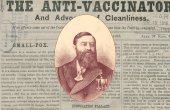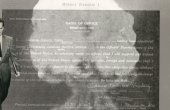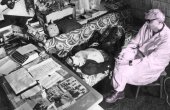300 Years of African-American Invention and Innovation
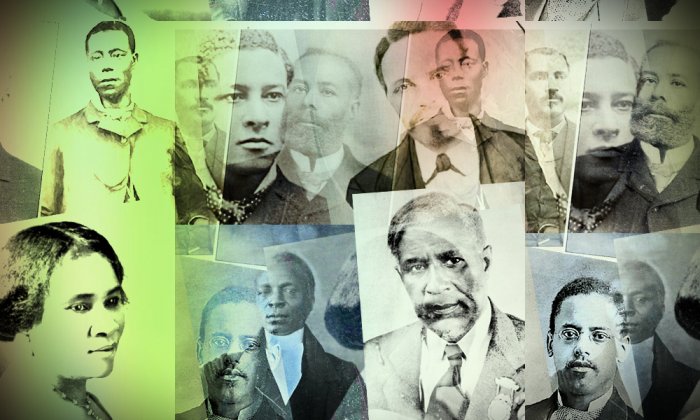
“The history of race in America has been written as if technologies scarcely existed, and the history of technology as if it were utterly innocent of racial significance. Neither of these assumptions bears scrutiny,” writes Bruce Sinclair in the introduction to the book “Technology and the African-American Experience,” from which the following essay by Portia James is excerpted. In both cases, the very opposite is true; an ancient and pervasive set of bonds links their histories.
James’s essay highlights the work of several extraordinary black inventors, many largely unrecognized, who made important and lasting innovations in a range of industries. It documents the realities of black technical creativity and pointedly challenges what Sinclair calls the “myth of black disingenuity” — the historical perception that black people were technically incompetent. “Denied the advantages of formal education or university degrees, without the funds to amplify inspiration, and against a strong tide of ingrained ill-will, these African-Americans proved capable of sustained and creative technical accomplishment,” writes James, a renowned curator and historian who for more than 30 years — until her death in 2015 — shaped the work of the Smithsonian Anacostia Community Museum, where she led the collections, exhibitions, and publications programs. “As imperfectly as we know their history, that much is certainly true.”
We are just beginning to uncover the history of African-American technology, just beginning to understand its relation to the full story of American invention and innovation, and now finally seeing that these histories are intertwined from the start. Enslaved Africans, carried against their will to this country, inevitably brought with them a store of technological knowledge, ways of doing things, that they applied to the daily processes of life in this unfamiliar environment. Black people have been here since the earliest times and, despite the perception that they were merely a source of ignorant labor, they had an immediate impact on the technologies around them — applying traditional skills, creating some anew, and altering the nature of still other practices. In fact, the New World was a place where many different cultures and technologies met. To say that we were culturally diverse from the first is also to say that our technologies were, too.
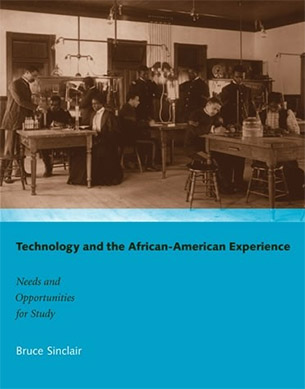
Increasingly, we discover the African roots of many early craft activities. Theresa Singleton, who has studied archeological sites in Berkeley County, South Carolina, points out that “West African culture was thoroughly woven into the daily lives of South Carolinians in the colonial era.”1 In South Carolina, slave houses were built with African building technology, while in the Chesapeake region excavated clay pipes reveal the decorative techniques of West African pottery.2 The study of early technology not only illustrates how African craft skills were incorporated into American technology, but how Africans were themselves incorporated into early American society. The clay pipes and pottery of the Chesapeake, for example, tell us something about the changing status of 17th-century blacks in America. It was not uncommon then for black slaves and white indentured servants to work together alongside their masters, and for black and white artisans to exchange craft techniques and trade secrets with each other. But by the beginning of the 18th century, as the previously varied forms of servitude congealed into black and white categories of slave or not slave, evidence of collaborative work disappears.3
Another example of the merging of different technological traditions is in the introduction, use, and development of dugout canoes in the Chesapeake region. Common in both the Caribbean, where Native American and later black boatmen used them for fishing, and in West Africa, where people depended on a vast network of rivers for transportation, dugout canoes were widely employed and modified according to circumstance. When West Indian immigrants began settling in the Chesapeake, the Africans among them continued their tradition of building boats from a single log, sometimes adding planks on each side to increase load-bearing capacity. John Vlach, who has studied the appearance of the pirogue in colonial America, has suggested that these West Indian blacks were the first to construct that type of boat in the Chesapeake in the early 1700s. And just as one can see evidence of the connections between African and European traditions in colonial-era pottery making, varieties of log canoe making in the Virginia and Chesapeake areas reflect the same interrelatedness.4
Slave owners might have expected their slaves to behave as automata, but they wanted the benefits of their brains as well.
Africans brought from the West Indies to the Carolinas in the 17th century came with rice-growing techniques as part of their cultural baggage, and it proved an important resource when English colonists — with little experience or knowledge of that crop — sought to exploit the marshy soils of the Carolina lowlands. These people, having originated in what was called the Rice Coast of West Africa, used their own traditional planting techniques and also knew the most efficient ways of hulling and cleaning rice. African-American mortars and pestles made expressly for hulling rice often show African designs, as do such other implements as the wide, shallow baskets that women wove from local grasses and then used to separate rice from chaff.5 This range of transplanted techniques provided the foundation for the principal agricultural crop of the Carolinas, and the wealth that flowed from it.
Knowledge, experience, and skill lie at the heart of creative technical activity, whether simple or complex. And it is clear that African-Americans possessed all the necessary ingredients for making improvements in the technologies they used. But before 1865, and the passage of the 13th and 14th Amendments to the Constitution, the impediments to an actual career of inventing, to the enjoyment of any economic rewards from their inventions — much less the recognition other inventors of this country received — kept most African-Americans from a public recording of their talents. Enslaved blacks were prohibited by law from the patent system because they were constitutionally defined as noncitizens. Still, there were frequent reports of slaves who developed improved ways of doing things, not surprising since so many of them possessed domestic, agricultural, and mechanical skills.
The case of “Ned” nicely illustrates what happened when a slave came up with an idea that promised financial gain. An enslaved mechanic in Pike County, Mississippi, Ned had devised a cotton scraper that local planters claimed would enable its users to do twice the work with half the horsepower. Consequently, Ned’s owner, a prominent local planter named Oscar J. E. Stuart, wrote in 1857 to the Secretary of the Interior, Jacob Thompson, seeking letters patent for himself as Ned’s owner, and therefore the owner as well of Ned’s invention. And Stuart purposely sought out Thompson, as “a Mississippian and Southern man,” to help him with his claim, reminding him that in the tradition of Southern law, “the master is the owner of the fruits of the labor of the slave both intilectual [sic], and manual.”6 Concerned that Patent Office officials might think of awarding the patent to Ned himself, Stuart argued that in such a case “the value of the slave to his master is excluded, and the equal protection and benefit of government to all citizens . . . is subverted.”7
In another letter, this time to the Commissioner of Patents, Joseph Holt, Stuart again applied for the rights to Ned’s invention, and he included with his letter an “affidavit” signed by Ned to the effect that the black man had invented the machine and was indeed the slave of Stuart. But Commissioner Holt denied Stuart’s claim, on the grounds that noncitizens could not apply for patent rights in the United States, an opinion in which the Attorney General concurred. Stuart’s enraged response fully reveals the context in which people like Ned found themselves:
I was never such an unmitigated fool which is the implication of the act of the Commissioner as to imagine that a slave could obtain a patent for a useful invention when under the laws, it is a question . . . whether the master who has a property alike in the fruits of the mind and labor of the hands of his slave whose automaton in legal contemplation he is . . . can obtain a patent when the invention is made by him. [The Commissioner] has made up a hypothetical case as though the slave Ned had petitioned for a patent for the invention & decided he could not entertain it. For if [Ned] has ever had any correspondence with [the Patent] bureau upon the subject I am ignorant of it, and for such impertinence, you know according to our Southern usage, I would correct him.8
Owners like Stuart might have expected their slaves to behave as automata, but they wanted the benefits of their brains as well. So when the Confederate States established their own patent act, one of its central provisions gave masters the rights to the inventions of their slaves.
Yet, in spite of law and custom, restrictions and hostility, free and unfree African-Americans in the decades before the Civil War brought their ideas for improvements in technology to a wide range of economic activity. Many of their inventions sprang directly out of the craft pursuits in which they were engaged, which is true of most inventions, and also why it is important to recognize the link between skill and creativity. We can see how that relation played out as Northern port cities — more cosmopolitan and at the same time more anonymous — proved a magnet for free blacks and escaped slaves seeking employment, and the maritime trades in those places became the major source of livelihood for them.
For instance, at least 1/5th of the merchant seamen in Philadelphia in 1796 were free blacks, and by 1846, according to the National Anti-Slavery Standard, there were 6,000 African-American seamen in port cities around the country. Boston and New York became important centers of maritime employment for black men, as did the whaling ports of Nantucket and New Bedford, Massachusetts, where the population of African-Americans doubled in the 1830s.9 Most of those men labored as ordinary seamen, but a few rose to command. The whaling ship Loper, for example, was commanded by a black captain and black navigators, and was manned by an almost entirely black crew.10 Out of their experience in these trades, they also became innovative.
James Forten (1766–1842) is a good example of the case. During the American Revolution, Forten, age 14, signed on the privateer Royal Louis where he served as a powder boy, alongside 20 other blacks. His ship was captured and he spent time in a British prison hulk before being released in a general prisoner exchange. On his return to Philadelphia, he apprenticed to the sailmaker Robert Bridges, who had previously employed Forten’s father. Obviously skilled, Forten was made foreman of the sail loft in 1786, and 12 years later became owner of the firm. At some point in that career, he invented, but never patented, some kind of sail handling device that reputedly helped make his business financially more successful.11 With his profits, Forten funded antislavery activities and became a prominent abolitionist pamphleteer and spokesman. His history not only reminds one of Frederick Douglass, who learned the caulker’s trade in Baltimore shipyards, before himself becoming a celebrated anti-slavery orator and publisher — but also of the vital connection Douglass sought to establish between the mastery of craft skill and a consequent manly independence of thought and action.
Lewis Temple (1800–1854) was another African-American in the maritime trades who turned his skills to invention. Born in Richmond, Virginia, Temple migrated to New Bedford and by 1836 had set up shop on Coffin’s Wharf as a blacksmith to the whaling trade. He moved again, in 1845, to the Walnut Street Wharf, and it was in that shop that he developed the Temple toggle harpoon, a modification to the ordinary harpoon to prevent it from being pulled loose as the whale struggled. There were many ideas for improved harpoons floating around the whaling ports, but what made Temple’s different, and successful, was that he incorporated in it a wooden shear pin that broke as the whale thrashed, thus releasing the toggle at right angles to the shaft and so making it fast. According to Sidney Kaplan, his biographer, Temple’s device became “the universal whale iron,” and remained so for a long time.12
Even though most free blacks worked as laborers or domestics, they could be found in virtually every craft, engaged as potters, tailors, blacksmiths, coopers, carpenters, and even silver and goldsmiths.
Like Forten, however, Temple never patented his improvement, even though as free men they had the legal right. Both class and color militated against patent applications by people like these; costs were involved in the application itself, a model and drawings to exemplify the improvement being claimed were also an expense, as were the services of a patent attorney to speed the process. And almost always, there was the reality of racial prejudice. The abolitionist and colonization advocate Martin R. Delaney (1812–1885), for example, developed a device that would assist railroad locomotives in descending and ascending inclined planes, and in 1852 traveled to New York to get a patent for it. He engaged the services of a patent attorney, but out of ignorance, or ill will, or both, Delaney was advised by his counselor that blacks were not considered citizens by the Patent Office, and that he should give up his application.13
These same factors, of course, also made it difficult for African-Americans to gain access to apprenticeship programs. Frederick Douglass was driven from his craft by the utter hostility of white ship caulkers, for example, and free blacks — North or South— faced restrictions on their freedom of movement, laws disallowing their testimony in court, the threat of disenfranchisement, or even enslavement for minor offenses, and often what amounted to a tacit boycott of their practice.14 But even though most free blacks worked as laborers or domestics, they could be found in virtually every craft, engaged as potters, tailors, blacksmiths, coopers, carpenters, and even silver and goldsmiths. Apprenticeships in the best paying crafts were least accessible, and the reverse was true, too.
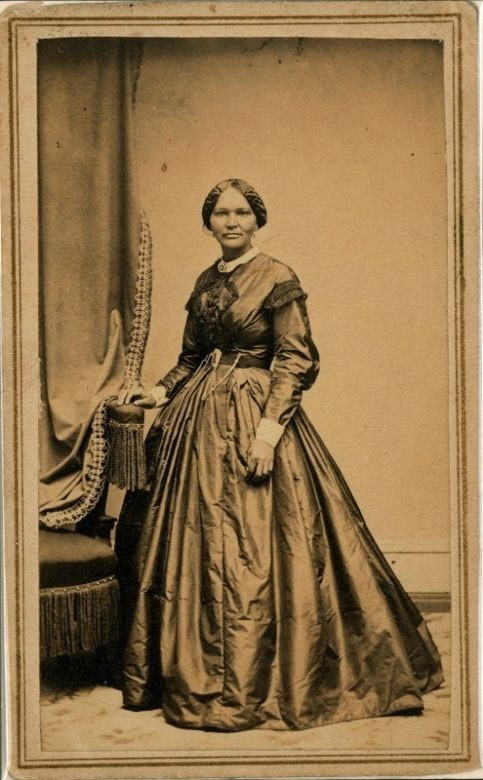
Tailoring was a relatively easy craft for African-Americans to enter, whether male or female. Thomas L. Jennings (1791–1859), for example, learned tailoring and dry cleaning and carried on that business in New York City, where in 1821, at the age of 30, he received a patent for an improvement in dry cleaning processes — perhaps the first black person in this country to have received one.15 And as was the case of so many others like him, Jennings used the income from his business to support his abolitionist activities. Elizabeth Keckley (1818–1907) took the earnings from her skills as a seamstress to buy her freedom from slavery, and then developed a system for cutting and fitting dresses that she taught to other dressmakers in Washington, D.C.16
Carpentry was another common trade for African-American skilled workers, and furniture makers formed a kind of elite within this group, enjoying higher wages and status. Henry Boyd (1802–1886), a Cincinnati furniture maker, derived much of his success from his invention of the Boyd bedstead — a wooden bed frame designed so that its wooden rails could be screwed into the headboard and the footboard simultaneously, thus creating a stronger frame. Boyd’s personal history suggests the kind of determination it took for a black person to make a success in business. In the first place, he had been apprenticed to a cabinet maker as a slave boy, but worked nights in a salt-processing plant to gain the money he needed to buy his freedom. Once in Cincinnati, he hired himself out as a laborer until he was able to form a house building partnership with a white carpenter, and that business provided the funds with which to buy his brother and sister out of slavery. By 1836 he owned his own bedstead factory, where he employed up to 50 workers and used steam-powered machinery. He was burned out by arsonists twice, and rebuilt his business both times, selling most of his beds in the south and southwest.17 Boyd did not patent his improvement, instead resorting to identifying his beds with a stamp that bore his name — a mark that now gives special value to collectors of the region’s furniture.
John Parker (1827–1900) was another slave who bought his freedom with craft skill. Parker began working in the iron foundries of Mobile, Alabama, where he was apprenticed to an iron molder, but took on extra work to earn the money with which he purchased himself from his master. He moved to Ohio in 1850, established a foundry, became active in the Underground Railroad movement, and invented a tobacco screw press, among other devices.18 In fact, a great many enslaved blacks labored in Southern industrial establishments, especially ironworking but also in shipyards, mines, and cotton mills — and Parker was far from the only one to use his skills to hire out for the extra money that bought freedom.
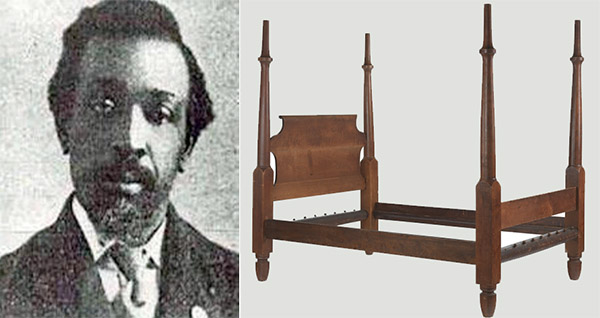
In a country that placed such a cultural value on inventiveness, African-Americans naturally sought to prove their own worthiness by technical accomplishment, and there is a long history of explicit efforts to establish that connection. Perhaps the most celebrated was Benjamin Banneker’s correspondence with Thomas Jefferson. In his Notes on the State of Virginia, published in 1781, Jefferson had argued the intellectual inferiority of the African, saying “one could scarcely be found capable of tracing and comprehending the investigations of Euclid.”19 Banneker, an ardent mathematician and astronomer, used his astronomical calculations to produce an almanac in 1791, and sent a copy to Jefferson by way of refuting that argument with the observation, “we have long been considered rather as brutish than human, and scarcely capable of mental endowments.”20 Nineteenth-century African-American activists remained just as aware of the political value of inventors, who were held up as explicit examples in the attack on claims of mental inferiority. To that end, the country’s foremost abolitionist newspaper, Liberator, published a notice in its issue of September 6, 1834, requesting information on “colored inventors of any art, machine, manufacture, or composition of matter.” His aim, the editor said, was “to collect proof of colored talent and ingenuity,” but also “to aid colored inventors in obtaining their patents for valuable inventions.”
These efforts to publicize the potential of black inventiveness became a staple of public assemblies, too. At the 1858 Convention of the Colored Citizens of Massachusetts, William C. Nell offered the following resolution:
Resolved, That we rejoice in the presence here today of Mr. Alexander [Aaron] Roberts of Philadelphia, the inventor of a machine for use at fires, which promises to be one of utility in their extinction, as also for preserving human life.
Resolved, That we would also direct attention to the new railway, by which space is economized, the use of horses obviated, and at the same time propelled by steam power; said railway being the invention of a colored man, William Deitz, of Albany, N.Y.
Resolved, That we commend these colored American Inventors and their inventions to the favorable attention of every lover of science and well-wisher of Humanity.21
And in an era of industrial exhibitions, African-Americans organized fairs and institutes to promote the accomplishments of skilled craftspeople and inventors. One of the earliest, The Colored American Institute for the Promotion of the Mechanic Arts and Sciences, was opened in Philadelphia on April 12, 1851. Its aim was to exhibit the work of black mechanics, artisans, and inventors, thus bringing them to the attention of clients, but also to exhibit proofs of black talent. Abolitionist newspapers lauded such fairs as glimpses of the kinds of achievements possible in the race, once freed from the constraints of slavery.
The reality is that most inventions submitted to the Patent Office in the 19th century consisted of minor improvements to the ordinary, workaday devices used by a rural people. There is no end to the number of patents for washing machines, butter churns, and farming tools, but that is because such things were at the heart of ordinary life, and because so many Americans imagined it possible to improve what they knew best. We see exactly the same eager ingenuity as African-Americans turned their hands to inventiveness.
George Peake (1722–1827) settled in northeastern Ohio in 1809, and invented a hand-operated mill for grinding wheat into flour. Henry Blair, a Montgomery Country, Maryland black man, received a patent for a corn planter in 1834 and another for a cotton planter in 1836.22 And there are many others, known only anecdotally, who are said to have developed cotton-cleaning machines, broom-making machines, systems for curing tobacco, and so on. The number of such stories suggests considerable creative vitality in the countryside, which can only be guessed at without the detailed historical information of patent records.
After the Civil War, there was an explosion of patented inventions by black mechanics, blacksmiths, domestic workers, and farm laborers — many of them ex-slaves.
But if most inventions required little theory and less science, some called for considerable technical training, and even in the period before the Civil War there are examples of that level of inventiveness. Norbert Rillieux (1806–1894) provides the best-known case, even if untypical. Born in New Orleans, Rillieux was the son of Constance Vivant, a quadroon, and Vincent Rillieux, a white engineer. His family, wealthy enough and with a French heritage, sent him to L’Ecole Centrale in Paris to receive a technical education. He later taught mechanical engineering at the school, and soon began to devote himself to questions of thermodynamics and the applications of steam power. In 1830 Rillieux conceived the multiple effect vacuum evaporation system, which he later patented. But, unable to persuade anyone in Paris to invest in his ideas, he returned to New Orleans with the hope of interesting someone there in the application of his improved methods to the refining of cane sugar. He obtained his first patent in 1843, but it was not until 1845 that he was able to put his evaporation techniques into successful operation. The system proved so efficient that planters could cover the cost of the machinery with the extra profits from the first crop of sugar cane processed by the new technology. The Rillieux method revolutionized the sugar industry by dramatically reducing the cost of producing refined sugar, and so making white sugar widely and cheaply available.23 He became wealthy from this invention, but as New Orleans became a less hospitable place for free blacks, enacting new discriminatory legislation, Rillieux returned to France and died there.
The end of the Civil War and the passage of the 13th and 14th Amendments meant that all black inventors now had the right to apply for patents. The result over the next few decades was a virtual explosion of patented inventions by black mechanics, blacksmiths, domestic workers, and farm laborers — many of them ex-slaves. By 1895 the U.S. Patent Office was able to advertise a special exhibit of inventions patented by black inventors.24
The list of new inventions patented by blacks after the Civil War reveals what kinds of occupations they held and in which sectors of the labor force they were concentrated. Agricultural implements, devices for easing domestic chores, and devices related to the railroad industry were common subjects for black inventors. Some patented inventions developed in the course of operating businesses like barbershops, restaurants, and tailoring shops. Joseph Lee, who had highly successful catering and restaurant businesses, considered himself a “bread specialist,” and invented bread-making and bread-crumbing machines.25 Alexander Ashbourn, of Oakland, California, received several patents in the 1870s related to food preparation, including patents for products derived from coconuts. He later moved to Boston and then to Philadelphia, where he began manufacturing and selling such goods as tooth powder, ink, vinegar, and soap — all made from coconuts. Henry A. Bowman, of Worcester, Massachusetts, began a business that made awnings, tents, canvas covers, and flags — the latter by an improved method that he patented. R. N. Hyde left Culpepper, Virginia, for Des Moines, Iowa, where he established a custodial service in 1880. The experience led him to invent an electric carpet cleaning machine and to develop a number of cleaning compounds. He sold his profitable business in 1905 and became prominent in Republican Party politics.26 And some black women inventors of this period have been identified, too. The Patent Office awarded a patent to Julia Hammonds for a knitting device, and one to Sarah E. Good for a folding cabinet.27
Men who had been blacksmiths and mechanics during slavery, and who were able afterwards to accumulate enough start-up capital, opened mechanical and iron-working businesses. William Powell started his own firm, the Standard Repair Shop, in Cass County, Michigan, in a community settled by escaped slaves, and developed a reputation for his inventiveness.28 Frank J. Ferrell, a skilled machinist and an ardent labor unionist, was a delegate and organizer for the Knights of Labor, one of the earliest national labor unions. He patented several valves, a steam trap, as well as an apparatus for melting snow, and these inventions became the basis for a manufacturing company that he established in New York City.29 Joseph H. Dickinson worked at the Clough & Warren Organ Company in Detroit, Michigan as a young man. Then in 1882 formed a partnership with his father-in-law to create the Dickinson-Gould Organ Company, in Lexington, Michigan, making parlor and chapel organs. The company sent a large chapel organ to the New Orleans Exposition of 1884, as part of an exhibit demonstrating the accomplishments of black people, and in the 1890s Dickinson received patents for several improvements in reed organs.30
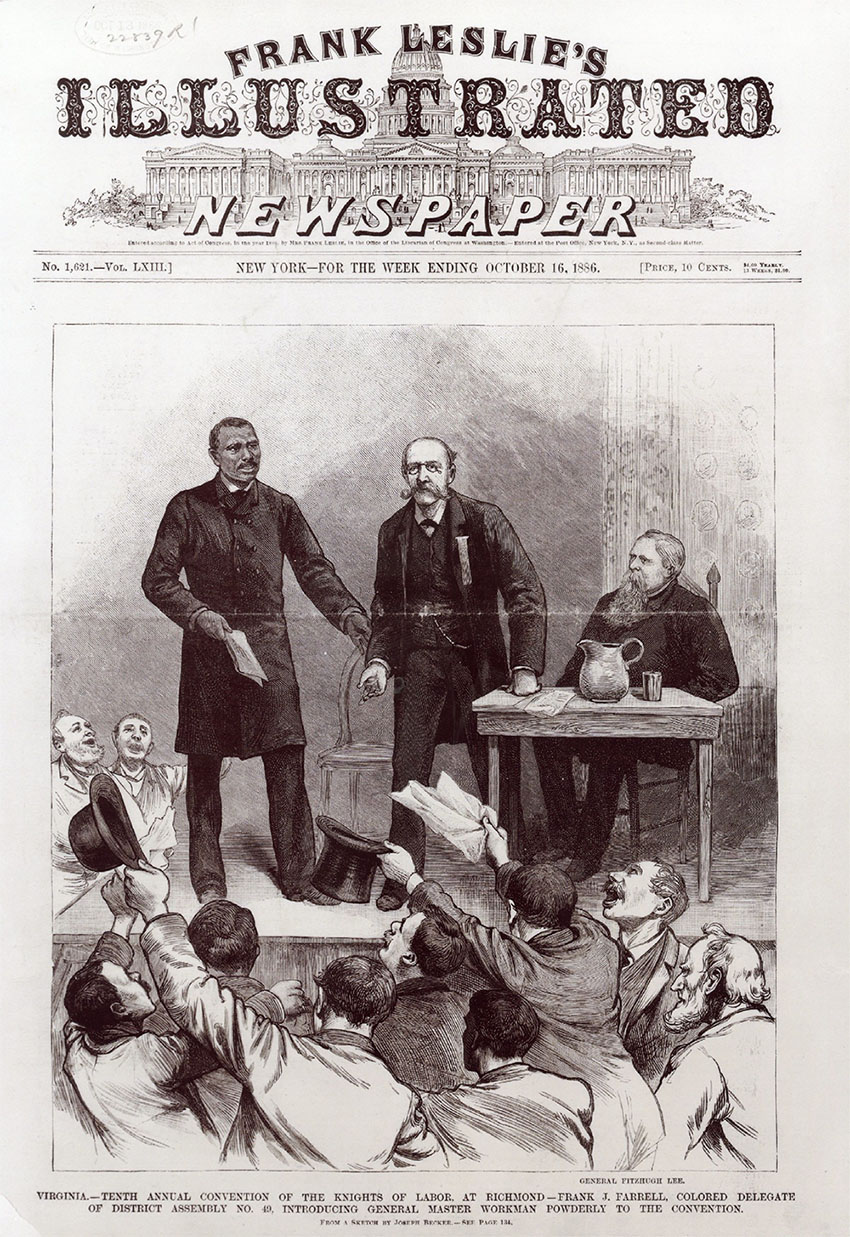
Two important points emerge from these various examples. One is that even in the face of poverty and discrimination, black people were as caught up in the appeal of invention as other Americans, and they worked at their improvements across a broad front of craft and trade enterprise. The other observation to be made is that while most African-Americans in the late 19th century still lived in rural areas and worked in agriculture, those with a particular interest and talent for invention gravitated to urban and industrial centers where there were more jobs and better pay. And it was in those places that the most well-known black inventors sharpened their gifts.
Jan Matzeliger (1852–1889) is a good illustration of the case. He apprenticed as a machinist in Surinam, his native country, and then immigrated to New England. Unable to find work as a machinist, he took a series of odd jobs, including one sewing on shoe soles in a factory in Lynn, Massachusetts, then the shoe-making center of America. Working in that industry led him to a mechanical solution for a particular problem in making shoes. Machines that could sew and tack shoes already existed, but the painstaking job of pulling, smoothing, and shaping leather until it approached the form of a human foot still had to be done by hand. That technique, called lasting, represented a bastion of craft skill from the worker’s point of view, but from the manufacturer’s perspective a considerable bottleneck to fully mechanized shoe production.
Matzeliger worked on several models of a lasting machine until he had produced a version that so approximated his final goal that he decided to patent it. However, this working model had taken four years to develop, he was suffering physically as well as financially, and he needed still more money to perfect the model, test it, and apply for the patent. In the end, he was forced to sell two-thirds of his ownership in the patent rights to local investors — not an uncommon plight for poor inventors, especially as it cost ever more to produce improvements in increasingly complex technologies.
In its trial run Matzeliger’s model successfully performed the lasting of 75 pairs of shoes, but he continued to refine his ideas and produced two more machines that were improvements on the original. Ironically for blacks, so often themselves the victim of technological unemployment, disgruntled shoe workers dubbed Matzeliger’s invention the “Niggerhead” machine.31 And indeed, after its usage became widespread, the craft of shoe lasting practically disappeared. An extraordinary technical accomplishment in itself, this invention essentially completed the mechanization of the shoe industry. The United Shoe Machinery Company, striving for monopoly control of the machines that made shoes, eventually bought Matzeliger’s patents, but he died in poverty.
The United Shoe Machinery Company, striving for monopoly control of the machines that made shoes, eventually bought Jan Matzeliger’s patents, but he died in poverty.
The most significant mechanical industry for the employment of African-American males in the post-Civil War period was the railroad. During the 1880s more than 70,000 miles of railroad track were laid, making rail transportation the country’s largest industry. Black men worked not only in the more visible service positions, but also in the most dangerous and arduous jobs. This rapid expansion of the railroad system called into existence many technological advances, and the Patent Office issued a wide array of patents to black inventors.
Humphrey H. Reynolds, for example, patented a ventilator in 1883 for passenger cars that allowed in fresh air, but kept out the dust and soot that usually enveloped a moving car. The Baltimore Afro-American reported on Reynolds’s ventilator when it was displayed at the Atlanta Exposition:
The H. H. Reynolds ventilator in the Pullman cars is perhaps the most widely used of those exhibited at Atlanta. Reynolds was a porter on one of the Pullman cars. Opening and shutting the windows as he did so often for his passengers, he devised a screen to keep the cinders out. Pullman heard of it and Reynolds was sent for. He explained his invention to the car magnate, and the interview resulted shortly afterward in the adoption of this ventilator on all the Pullman cars. Reynolds claimed the invention, but Pullman did not recognize the claim. He got out of the service of the Pullmans, sued them, and got a verdict for ten thousand dollars.32
The story of Andrew Beard, another black inventor, also had a happy ending. He worked in a railroad yard in Eastlake, Alabama, and had occasion to notice the difficulties in manually coupling cars together. It was a dangerous job, the cause of many injuries, and also the source of jarring lurches and jolts when trains started or stopped. Indeed, this common problem became one of the most popular subjects for inventors. In 1897 alone 6,500 different kinds of couplers were invented, and by 1930 11,813 patents for them had been issued. One of those in 1897 was Andrew Beard’s, and he sold the rights to it for $50,000.33 But not all inventors fared so well. It took money to fight off challenges to a patent, and few black inventors had the resources for a protracted legal battle.
Railroad locomotives were another particular focus of inventive activity, and they attracted the attention of Elijah McCoy (1843–1929), one of the most prolific of 19th-century African-Americans inventors. He was born in Colchester, Ontario, in a community of escaped slaves, and went to Scotland as a young man where served a mechanical engineering apprenticeship in Edinburgh. McCoy then migrated to the United States, and wound up seeking a position in Ypsilanti, Michigan, the headquarters of the Michigan Central Railroad. Despite his training, the only job available to him was as a locomotive fireman but it soon made him aware of the problems of overheating common to steam locomotives, since so many moving parts could not be lubricated while the engine was in motion. In 1872, McCoy patented the first of his automatic lubrication devices — one that turned out to be widely employed on stationary steam engines that were used in factories. He assigned his rights to this patent to two Ypsilanti investors, using the money he received for further studies of lubrication problems. The Michigan Central also gave him a new job as an instructor in the use of the new lubricators, which were widely adopted by railroad and shipping lines. Over the next several years, McCoy patented more than 50 additional inventions, most of them related to lubrication. He later moved to Detroit, where the Elijah McCoy Manufacturing Company had been established by the assignees of his most valuable patents.34 McCoy, however, was not a major stockholder and later in life suffered a number of financial setbacks. After creative insight, the next best knowledge for an inventor to possess is an understanding of the economics of patent management.
That post-emancipation outpouring of inventiveness, and the dramatic surge of American industrial development in the 1870s and the 1880s, persuaded many African-American leaders that technical and industrial training was the key to their full incorporation into the nation’s life. The success of individual black inventors was thus held up as a beacon of what might be achieved on a wider scale. Expositions and fairs had long been a popular means of demonstrating the achievements of blacks to the wider public. But after the Civil War, they took on the specific purpose of exhibiting the “phenomenal progress of the colored American” since emancipation. Several states sponsored “emancipation expositions” on the anniversaries of the Emancipation Proclamation. African-Americans continued to organize independent expositions and fairs; they also participated in the state and regional expositions where black crafts and manufacturers, as well as inventions by blacks, were prominently featured in segregated “colored” or “Negro” departments. Thus, inventions by blacks were displayed at the Cotton Centennial in New Orleans in 1884, the Chicago World’s Fair in 1893, and the Southern Exposition in Atlanta in 1895. Benjamin Montgomery, for example, now a free man, proudly exhibited at the Western Sanitary Fair in Cincinnati the propeller he had invented while a slave of Joseph Davis — the brother of Jefferson Davis, President of the Confederacy.35
In an 1894 speech before the House of Representatives on behalf of proposed legislation sponsoring another Cotton States Exhibition to publicize the South’s economic and technological progress since the Civil War, Representative George Washington Murray (1853–1926) read into the Congressional Record the names and inventions of 92 African-American inventors. Murray himself was responsible for 12 of those inventions, but the point of his remarks was to urge that a separate space be reserved to display some of the achievements of Southern black people, and he set out the reason why they wanted to participate in such expositions:
Mr. Speaker, the colored people of this country want an opportunity to show that the progress, that the civilization which is now admired the world over, that the civilization which is now leading the world, that the civilization which all nations of the world look up to and imitate— the colored people, I say, want an opportunity to show that they, too, are part and parcel of that great civilization.36
Murray’s list was derived from the research of Henry E. Baker, a Patent Office examiner who dedicated most of his life to uncovering and publicizing the contributions of black inventors. Baker’s research also provided the information used to select black inventions exhibited at the Cotton Centennial in New Orleans, the Columbian Exposition in Chicago, and the Southern Expositions in Atlanta. By the time of his death, Baker had compiled four massive volumes of patent drawings and specifications for patents awarded to black inventors.
While always cast in positive language, multiple efforts to promote and celebrate African-American inventiveness were also designed to attack the myth of black intellectual inferiority, so explicitly advanced in those years.
In 1900, at the request of the U.S. Commission to the Paris Exposition, and with Baker’s assistance, the U.S. Patent Office sent letters to more than 3,000 patent attorneys, manufacturers and newspaper editors asking them to list any black inventors who might have come to their attention. This was the government’s first systematic effort to collect information about inventions by blacks. The results revealed the names of more than 400 inventors who had received patents, and of many more who had tried to obtain patents. This data found its way into the U.S. exhibit’s Negro Department, organized by Thomas J. Calloway and W. E. B. Du Bois which, among other materials about technical and industrial training, displayed 350 new patents granted to black inventors.37 And the Jamestown Exposition, held in Jamestown, Virginia, in 1907 to commemorate the tercentenary of European settlement there, provided yet another opportunity to call attention to the technological progress of the race. A separate building designed by black architects and constructed by black contractors housed displays of the work of black artisans, inventors, and students.38
While always cast in positive language, these multiple efforts to promote and celebrate African-American inventiveness were also designed to attack the myth of black intellectual inferiority, so explicitly advanced in those years. Newspapers like the Southern Workman, Colored American Magazine, and Crisis trumpeted the contributions of black inventors, and so did a variety of other publications such as Munroe Work’s The Negro Yearbook, Twentieth-Century Literature, which D. W. Culp edited, and Evidences of Progress among Colored People by G. F. Richings. The search for recognition was important, Henry Baker explained in 1902:
Judging from what has been duly authenticated as Negro inventions patented by the United States, it is entirely reasonable to assume that many hundreds of valuable inventions have been patented by Negro inventors for which the race will never receive due credit. This is the more unfortunate since the race now, perhaps, more than ever before, needs the help of every fact in its favor to offset as far as possible the many discreditable things that the daily papers are all too eager to publish against it.39
By 1900 more black people were living in cities than ever before. Thousands had left the fields and wash-tubs of the South to seek their fortunes in the factories and laundries of the North. Madame C. J. Walker (1867–1919) was one of those migrants, and she prospered from innovative cosmetic products marketed to this new urban black population. Born Sarah Breedlove in rural Louisiana, she settled in St. Louis, Missouri, supporting herself and her daughter by working as a washer-woman. But she had an idea for beauty products, and by 1905 she had created a formula for straightening and grooming black women’s hair. She first sold these hair preparations in Denver, Colorado, under her married name, but after five years of aggressive salesmanship she was able to establish a headquarters in Indianapolis for the national distribution of her goods.40 Two strategies proved especially successful; she developed a whole system of hair and cosmetic products, and then established salons of her own that popularized straightened hair as the image of a smart, effective city woman.
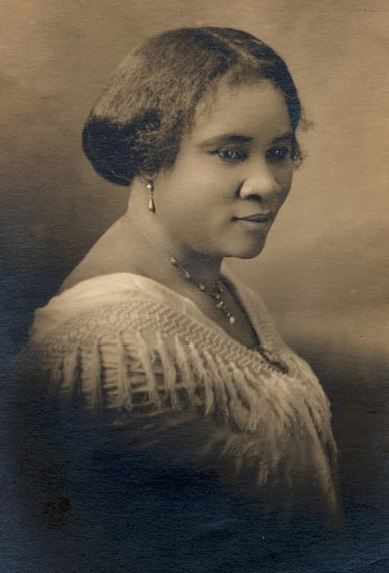
Just as Harlem became a Mecca for ambitious African-Americans in the early 20th century, and a center of black culture and personal style, Washington, D.C., was a popular destination for upwardly mobile blacks because of the employment opportunities that the federal government offered. Several Washington residents who worked as civil servants patented successful inventions. Robert Pelham (1859–1943) began his career as a newspaper publisher and editor in Detroit. His paper, the Plaindealer, became one of the most successful black newspapers of the Midwest, and that led him into Republican party activities. Perhaps because of that connection, he moved to Washington in 1900 and began a 37-year tenure at the U.S. Census Bureau. During the course of his work he conceived and patented a tabulating machine in 1905, and an adding machine device in 1913.41 Another Washingtonian, Shelby Davidson (1868–1931), came from Lexington, Kentucky, in 1887 to work in the auditing department of the U.S. Post Office Department, and he was also drawn into the technology of office equipment. In 1906 Davidson began to study adding machines with an eye to improving them to handle government auditing functions more efficiently. He visited several factories to observe exactly how they constructed these machines, and after two years of study patented his first invention, a rewind device for calculators. Davidson claimed that “by the use of this device the government would save three-fourths of the paper used on the machines and the time of the clerks in taking up the paper.”42 Fascinated by the problem of mechanical tabulation, Davidson worked on various improvements for his device, and in 1911 received another patent, this one for an “automatic fee device” that helped postal clerks assess the correct fees.
Besides the difficulties and expenses of the creative process itself — working out the design issues, contriving models to demonstrate the principles involved, preparing written descriptions that provide the appropriate legal basis for the claim advanced, and getting made the detailed drawings that illustrate all the properties of the invention — inventors had also to think about manufacturing and marketing their creations, and about securing their rights against encroachment. And the more valuable the patent, the more effort and money were required to protect it.
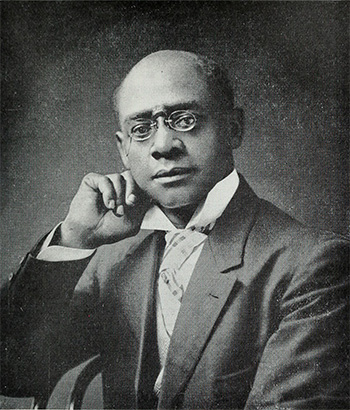
By the 1900s manufacturing and marketing a new invention presented such formidable problems that many inventors chose to assign their patents outright to agencies, private investors, or corporations. That gave inventors an immediate financial reward for their inventions and freed them from the burden of risk, but they lost all rights to whatever profits the patent subsequently earned for its new owners. More often than not, money concerns decided the issue for poor inventors, and they were the ones most likely to assign their patents. But Samuel Scottron, a New York manufacturer, provides the example of someone determined to market his own inventions.
Originally a merchant of household goods, Scottron first designed an adjustable mirror. These mirrors, he claimed, were “so arranged opposite each other as to give the view of every side at once . . . and so simple too, that it was impossible to accomplish the same result in a simpler or cheaper manner.”43 Unwilling to have someone else to make his mirrors, or to assign his patent, Scottron decided to manufacture them himself. To do that, he enrolled in night school where he studied practical mathematics, also apprenticing himself to a pattern-maker and to a master mechanic, and then began to make his mirrors. They proved successful, and he then patented other versions that he also produced.
Having learned to manipulate materials, Scottron left his mirror-making business behind and became interested in the manufacture of window cornices. He described the rise and decline of this enterprise for the readers of the Colored American Magazine:
Very soon, however, a new patent having great possibilities was granted me, for an extension cornice. I received several patents for these and abandoned the mirror, putting these out on a royalty, and entering the manufacture of extension cornices, which coined thousands while it lasted, an excellent thing in every way; but it came to grief through one of those causes that will sometimes lay out, stiff dead, the best thing in the market, viz.: the capriciousness of fashion. Curtain poles came into fashion and killed the cornice business entirely, in less than six months of activity in opposition.44
Undaunted, he abandoned the extension cornice business to begin manufacturing synthetic onyx, an endeavor in which he enjoyed considerable financial success until he retired. Scottron was a tireless booster of black business and invention, wrote several articles encouraging people to go into manufacturing and trade, and offered advice to would be inventors as well. First he suggested that patent holders try to manufacture their own inventions, and to learn as much as possible about design and mechanical engineering:
There is possibly no shop where one can serve and get a broader knowledge of applied mechanics than a well patronized pattern-making shop, bringing one as it does into a consideration of the various elements, substances; etc. used in manufacture; their nature and possibilities. It grounded me and gave me confidence in myself, and an actual knowledge of possibilities, which prevented many costly ventures and foolish mistakes, such as the patenting of things absolutely useless.45
Scottron also recommended that the prospective inventor aim for simplicity in design and construction. Simplicity, he claimed, is “a thing very necessary in patent articles. A patent which can be simplified by another is worth nothing.” The key to simplicity was mechanical knowledge, understanding “how not to use three motions where two will do the work.” The other thing to know about was the market. Familiarity with tastes and demand “will show you whether what you wish to accomplish will be worth anything in the market.”46
For those attempting a career as a full-time inventor, getting into production and marketing could seem a next logical step. Garrett Morgan (1875–1963) invented and patented a safety hood in 1914, and gained national prominence for his device when he used it to rescue workers trapped by fire and gases in a tunnel explosion at Cleveland, Ohio. It was quite a dramatic moment. Two previous rescue efforts by police and firemen ended in disaster when additional gas explosions killed nine of them. Morgan then arrived on the scene with several of his safety hoods, which he took into the tunnel and used to bring out three survivors, as well as the bodies of the others.47 The resulting publicity brought investors, and together with Morgan they formed the National Safety Device Company to manufacture his hoods. In 1923 Morgan patented another safety invention, a mechanical traffic signal, which came into wide usage. He marketed the signal through a company he formed for that purpose, the G. A. Morgan Safety System, but then later assigned the patent to the General Electric Company.
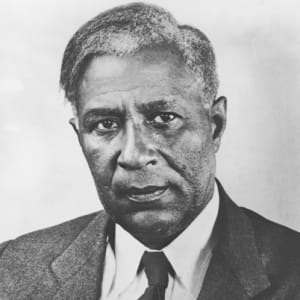
The years from 1880 to 1930 seem the heroic age of American invention because so much technical advance — particularly in the fields of electricity and communication — can be associated with individuals. The names that come most obviously to mind are those of Edison and Bell, with Westinghouse, Sprague, and Maxim not far behind in celebrity. We also know them because they were highly successful entrepreneurs, and their names survive in the corporations they established. Less celebrated by the popular press, but certainly worth knowing about are African-American inventors like Granville Woods and Lewis Latimer, both also associated prominently with the electrical industry.
Granville Woods (1856–1910) was born in Columbus, Ohio, where he apprenticed as a machinist and blacksmith. He then worked for a time as a railroad fireman and engineer, but became quite interested in the emerging field of electrical engineering, began reading deeply in the subject, and took evening courses in electrical and mechanical engineering. The need for a job led him back to steam engines, working on a British steamer for a couple of years, and again on American railroads — employment that also resulted in his first patent, in 1884, for an improved steam boiler. But, with the model of Edison clearly in mind, he seemed determined to devote himself to electrical inventions, and founded the Woods Electric Company in Cincinnati to research, manufacture, and market his inventions. The first of his electrical inventions, for an improved telephone transmitter, came shortly afterward and was patented in 1884.48
In fact, Woods did not actually have the capital to develop his first two inventions, and he assigned his patent rights to others. Furthermore, in the case of his telephone transmitter he faced stiff competition from Alexander Graham Bell, who already had a well-established company to produce telephone equipment and the protection of prior patents. Still, the improvement of known devices is a staple feature of invention, and in 1885 Woods patented another “electrical apparatus for transmitting messages.” He sold this device, which allowed operators to transmit either Morse code or voice messages, to the Bell Telephone Company.
Woods continued to design and patent electrical equipment, particularly for railway telegraph and electrical railway systems. These inventions brought him into direct competition with Thomas Edison and another inventor named Lucius Phelps, who had invented similar telegraphic devices, and which of them would enjoy patent protection for the invention had to be determined in court. Woods won, and his legal victory also brought publicity for his career as an inventor, which the American Catholic Tribune described:
Mr Woods, who is the greatest electrician in the world, still continues to add to his long list of electrical inventions. The latest device he invented is the synchronous multiplex railway tele- graph. By means of this system, the railway dispatcher can note the position of any train on the route at a glance. The system also provides for telegraphing to and from the train while in motion. The same lines may also be used for local messages without interference with the regular train signals. The system may also be used for other purposes. In fact, 200 operators may use a single wire at the same time. Although the messages may be passing in opposite directions, they will not conflict with each other. In using the device there is no possibility of collisions between trains as each train can always be informed of the position of the other while in motion. Mr. Woods has all the patent office drawings for these devices as your correspondent witnessed. The Patent Office has twice declared Mr Woods prior inventor. The Edison and Phelps Companies are now negotiating a consolidation with the Woods Railway Telegraph Company.49
Woods moved to New York City in 1890, to take advantage of the better opportunities for electrical engineers there, and went on to develop a number of improvements in the equipment used in electric street car systems. Among those innovations were the application of secondary “dynamotors” that reduced the risk of fires, and a technique for better connecting the street car to its electric power system. That device, called a troller, consisted of a grooved wheel at the end of a wand under spring tension, that pushed against the overhead electrical wire and so with less friction loss conducted current to the motor of the trolley car.
In an earlier era, when most inventions grew simply out of familiarity with craft practice and work experience, the chief obstacle for black inventors, besides racial prejudice, was money. But by the 20th century, both technology and its institutional structures had changed. Many of the most important innovations now began to come from teams of researchers employed by large corporations that assumed the rights to their patents. More and more often, inventors were salaried personnel and had university degrees in science or engineering. Few black men and women were able to obtain the necessary degrees in those fields of study, and those who did had to overcome the reluctance of most firms to employ them in such positions.
But a small number, due to their talent and persistence, did manage to find places in large-scale industrial research and development enterprises. Lewis H. Latimer (1848–1928) was one of them. Born in Boston, he was the son of an escaped slave, George Latimer, who became famous for the defense campaign mounted on his behalf by the abolitionist William Lloyd Garrison. When George Latimer’s owner appeared in Boston, demanding the return of his “property,” the abolitionists of the city staged a series of rallies and fund-raising events to raise enough money to purchase Latimer’s freedom.
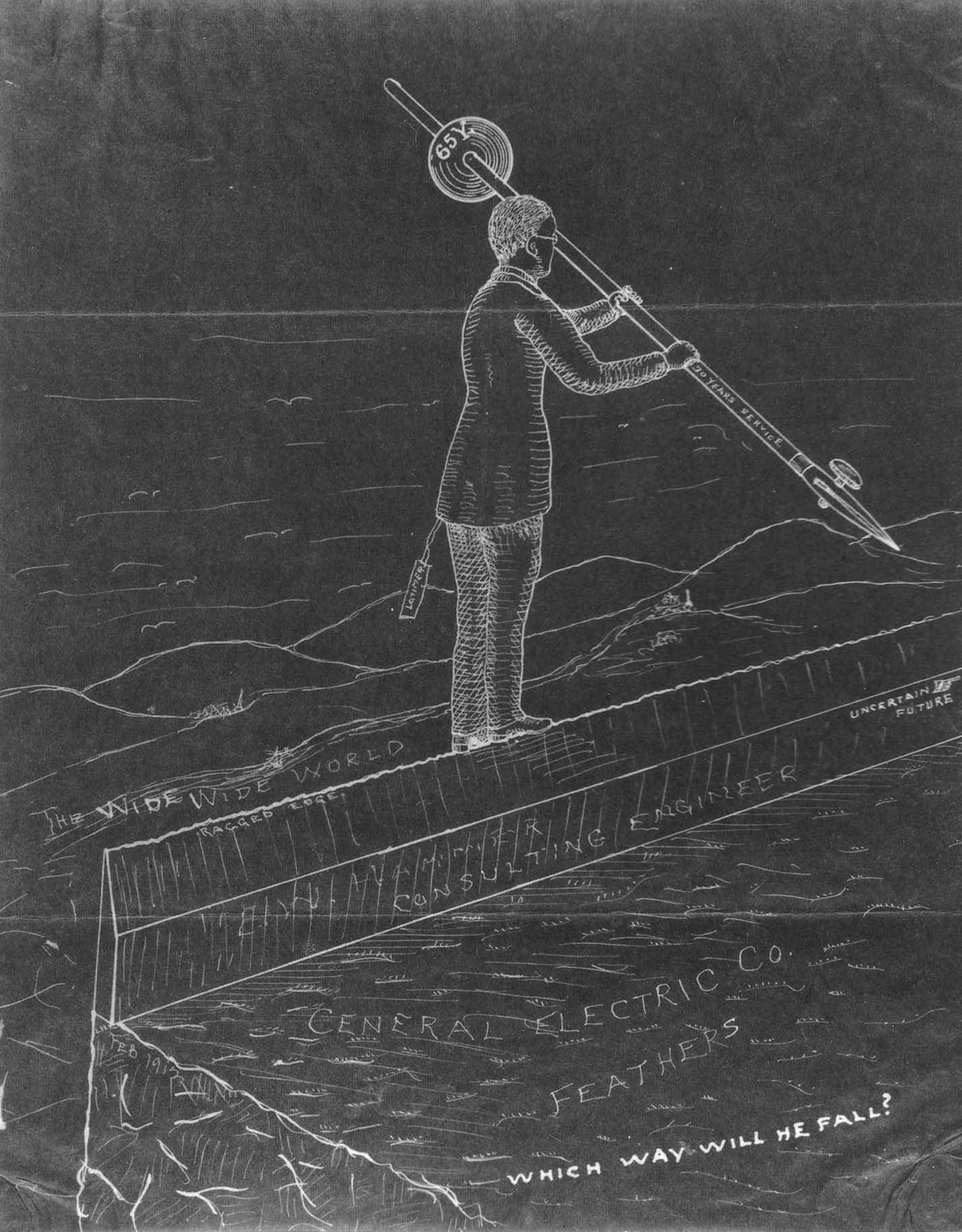
Lewis Latimer served the Union cause in the Civil War. After his discharge, he took a job as office boy in a Boston patent law firm. But his employers were so impressed with his drawing abilities that he soon became a patent draftsman, and then the head draftsman for the firm. Latimer made the patent drawings for many of Alexander Graham Bell’s telephones, and testified in court on Bell’s behalf when his patents were challenged. Next he became a patent draftsman at Hiram Maxim’s United States Electric Company and began more closely to work with the developing electrical technology. Maxim was one of Edison’s biggest competitors, and much of the struggle for the burgeoning market for electrical lighting revolved around the search for improved light bulb filaments. In 1881, one year after joining Maxim’s firm, Latimer and a coworker patented an improved method for bonding carbon filaments.
The following year, Latimer patented a technique for making carbon filaments. This was one of his most significant inventions, for carbon filaments produced by his method were much more cost efficient.50 As Latimer’s expertise increased, he was given more responsibilities, and was soon supervising the installation of electric light plants in New York, Philadelphia, and other cities. He also traveled to London to establish a department in Maxim’s branch there for the production of his light bulb filaments.
In 1884, Latimer began working with the engineering department of the Edison Electric Light Company in New York. Six years later, he was transferred to Edison’s legal department, where he served as chief draftsman for patents under legal dispute. His skill in illustrating electrical patents led 1896 to his appointment as draftsman for the Board of Patent Control, a body established by General Electric and Westinghouse to oversee patent disputes between them. Latimer worked with that group until 1911, when he left to practice as a patent consultant in New York. In an evocative self-portrait, Lewis depicted the difficulty, at his age, of deciding between job security with corporate enterprise, or the economic risks of independent consulting.
These sketches of African-American inventiveness, brief as they are, reveal some important truths. One is that black people, both women and men, have been active participants in the history of American technology from the very beginning. Even enslaved, they were moved to create improved ways of doing things. Indeed, inventiveness was agency, a means of taking as much control of one’s destiny as possible, and there is plenty of evidence that a great many grabbed at the chance. Their ideas, as well as their labor, also proved a source of great wealth to 18th- and 19th-century America, and that is worth remembering, too.
But perhaps the most important lesson of all is that their stories give the lie to all those old notions of inferiority. Denied the advantages of formal education or university degrees, without the funds to amplify inspiration, and against a strong tide of ingrained ill-will, these African-Americans proved capable of sustained and creative technical accomplishment. As imperfectly as we know their history, that much is certainly true.
Portia James (1953-2015) was a curator and historian who for more than 30 years shaped the work of the Smithsonian Anacostia Community Museum, where she led the collections, exhibitions, and publications programs. This essay is excerpted from the book “Technology and the African-American Experience.”
Notes
- Theresa Singleton, “Buried Treasure,” American Visions, March-April 1986, p. 36.
- “Old Pipes Offer New View of Black Life in Colonies,” New York Times, July 12, 1988.
- Ibid.
- John Vlach, The Afro-American Tradition in the Decorative Arts (Cleveland Museum of Art, 1978), p. 102.
- Peter Wood, Black Majority: Negroes in Colonial South Carolina from 1670 through the Stono Rebellion (Norton, 1975), p. 25. See also Dale Rosengarten, Row upon Row: Sea Grass Baskets of the South Carolina Low Country (McKissick Museum, 1986), p. 6.
- O. J. E. Stuart to Secretary Jacob Thompson, August 25, 1857, Office of the Secretary of the Interior, Records Concerning the Patent Office, 1849–89, Letters Concerning the Patent Office, vol. 1 (1857–73), National Archives.
- Ibid.
- Stuart to Thompson, December 18, 1857.
- Gary Nash, “Forging Freedom: The Emancipation Experience in the Northern Seaport Cities, 1775–1820,” in Slavery and Freedom in the Age of the American Revolution, ed. I. Berlin and R. Hoffman (University Press of Virginia for U.S. Capitol Historical Society, 1983), p. 8. More specifically, see W. Jeffrey Bolster, Black Jacks: African American Seamen in the Age of Sail (Harvard University Press, 1997).
- James B. Farr, Black Odyssey: The Seafaring Traditions of Afro-Americans, Ph.D. dissertation, University of California, Santa Barbara, 1982, p. 31.
- Portia P. James, The Real McCoy: African American Invention and Innovation, 1619–1930 (Anacostia Museum and Smithsonian Institution Press, 1989), pp. 33–35.
- Sidney Kaplan, “Lewis Temple and the Hunting of the Whale,” New England Quarterly 26 (1953), March, p. 85.
- William J. Simmons, Men of Mark: Eminent, Progressive, and Rising (Arno, 1968 reprint of 1887 edition), p. 1012.
- Winthrop Jordan, White Over Black: American Attitudes Toward the Negro, 1550–1812 (Penguin, 1968), p. 406. Speaking of the deep animosity of white craftsmen towards black workers, Frederick Douglass complained that it would be easier to get his son “into a lawyer’s office to study law than . . . into a blacksmith’s shop to blow the bellows and to wield the sledgehammer” (Wilson J. Moses, The Golden Age of Black Nationalism, 1850–1925, Oxford University Press, 1978, p. 28).
- See Jennings’s obituary in Anglo-African Magazine, April 1859 (Arno and New York Times, 1968 reprint).
- Elizabeth Keckley, Behind the Scenes; Thirty Years as a Slave and Four Years in the White House (Arno and New York Times, 1968 reprint).
- William C. Nell, Colored Patriots of the American Revolution (Arno, 1968 reprint of 1855 edition), p. 265. See also Jane Sikes, The Furniture Makers of Cincinnati, 1790 to 1849 (Cincinnati, n.d.).
- Rayford W. Logan and Michael R. Winston, eds., Dictionary of American Negro Biography (Norton, 1982), p. 481.
- Thomas Jefferson, Notes on the State of Virginia (University of North Carolina Press, 1955), pp. 139–142.
- As quoted in Silvio Bedini, The Life of Benjamin Banneker (Scribner, 1972), p. 152.
- Charles Wesley and Abram Harris, Negro Labor in the United States, 1850–1925 (Russell & Russell, 1967 reprint of 1927 edition), p. 51.
- Logan and Winston, Dictionary of American Negro Biography, p. 485.
- Louis Haber, Black Pioneers of Science and Invention (Harcourt Brace and World, 1970), pp. 13–23. See also Patricia and Frederick McKissack, African American Inventors (Millbrook, 1994), pp. 41–48. The Louisiana State University Library maintains a very useful website called “Faces of Science: African Americans in the Sciences,” and it has technical details on Rillieux’s inventions.
- “News Notes: Items of Interest Concerning Our People Everywhere,” Baltimore Afro- American, October 26, 1895.
- McKissack, African American Inventors. Henry Baker, The Colored Inventor: A Record of Fifty Years (Arno, 1968 reprint of 1915 edition) also contains basic information about a wide array of black inventors.
- The Johns Hopkins University Applied Physics Laboratory maintains a website with information on African-American inventors and scientists, including Hyde.
- For more information about women inventors, see Autumn Stanley, “From Africa to America: Black Women Inventors,” in The Technological Woman: Interfacing with Tomorrow, ed. J. Zimmerman (Praeger, 1983).
- Michigan Freedmen’s Progress Commission, Michigan Manual of Freedmen’s Progress (J.M. Green, 1968 reprint), pp. 41–44.
- Henry Baker, The Colored Inventor (Arno and New York Times, 1969 reprint), p. 9. See also C. R. Gibbs, Black Inventors from Africa to America (Three Dimensions, 1995), p. 96.
- Baker, The Colored Inventor, p. 9.
- Sidney Kaplan, “Jan Earnest Matzeliger and the Making of the Shoe,” Journal of Negro History 40 (1955), January, p. 21.
- “Some Afro-American Inventors: Patents That Have Been Taken Out by Colored Men,” Baltimore Afro-American, November 2, 1895.
- McKinley Burt Jr., Black Inventors of America (National Book Company, 1989), pp. 1, 18–20. See also Patricia Carter-Ives, Creativity and Inventions: The Genius of Afro-Americans and Women in the United States and their Patents (Research Unlimited, 1987), pp. 29–31.
- James, The Real McCoy, pp. 73–83.
- Moses, The Golden Age of Black Nationalism, p. 46. Not everyone agreed on the subject of black participation in segregated exhibits, however. See, for example, Ida B. Wells-Barnett, The Reason Why the Colored American Is Not in the World’s Columbian Exposition (Chicago, 1893); Linda McMurry, The Life of Ida B. Wells (Oxford University Press, 1998), p. 186; and Robert Rydell’s version of the events in his The Reason Why the Colored American Is Not in the World’s Columbian Exposition: The Afro-American Contribution to Columbian Literature (University of Illinois Press, 1999).
- Congressional Record, 53rd Congress, 2nd session, August 10, 1894, p. 8382.
- W. E. Burghardt Du Bois, “The American Negro at Paris,” American Monthly Review of Reviews, pp. 22, 575.
- Lucy Brown Franklin, “The Negro Exhibition of the Jamestown Ter-Centennial Exposition of 1907,” Negro Historical Bulletin 38 (1975), June-July, p. 408. See also Ruth Winton, “Negro Participation in Southern Expositions, 1881–1915,” Journal of Negro Education, winter 1947, p. 34; Giles Jackson and D. Webster Davis, Industrial History of the Negro Race (Books for Libraries Press Reprints, 1971 reprint of 1911 edition); Francis H. Warren, Michigan Manual of Freedmen’s Progress (Freedmen’s Progress Commission, 1915).
- Henry Baker, “The Negro as an Inventor,” in Twentieth-Century Negro Literature, ed. D. Culp (Arno, 1969 reprint of 1902 edition), p. 401.
- James, The Real McCoy, p. 85.
- Michigan Freedmen’s Progress Commission, Michigan Manual of Freedmen’s Progress, pp. 87–92. See also Baker, Colored Inventor, p. 10.
- Autobiographical statement in the Shelby Davidson Papers, Moorland-Springarn Research Center, Howard University.
- Samuel Scottron, “Manufacturing Household Articles,” Colored American Magazine, October 1904, p. 662.
- Ibid., p. 623.
- Ibid., p. 624.
- Ibid., p. 623.
- Morgan provided a compelling description of this rescue in a letter to F. M. Wilmot. Garrett Morgan Papers, Western Reserve Historical Society, Cleveland.
- Aaron Klein, Hidden Contributors: Black Scientists and Inventors in America (Doubleday, 1971), p. 73.
- As quoted in Klein, Hidden Contributors, p. 73.
- James, The Real McCoy, pp. 97–99. See also Klein, Hidden Contributors, p. 71.
